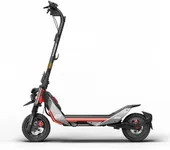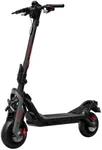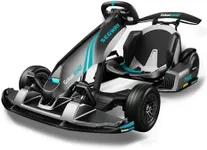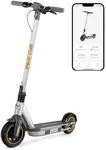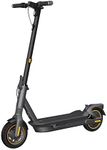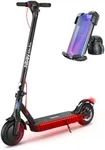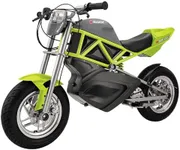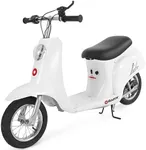Buying Guide for the Best Segway Scooters
Choosing the right Segway scooter can be a fun and rewarding experience. Segway scooters are a great way to get around, whether you're commuting to work, running errands, or just enjoying a leisurely ride. To find the best fit for you, it's important to consider several key specifications. These specs will help you understand the capabilities of different models and how they align with your needs and preferences.RangeThe range of a Segway scooter refers to the maximum distance it can travel on a single charge. This is important because it determines how far you can go before needing to recharge. If you plan to use your scooter for long commutes or extended rides, look for a model with a longer range, typically 20 miles or more. For shorter trips or occasional use, a range of 10-15 miles may be sufficient. Consider your typical travel distance to choose the right range for you.
Top SpeedTop speed indicates how fast the scooter can go. This is important for both safety and convenience. If you need to keep up with traffic or want to get to your destination quickly, a higher top speed (around 15-20 mph) might be beneficial. For leisurely rides or if you prefer a more controlled speed, a lower top speed (10-15 mph) may be more appropriate. Think about where and how you'll be riding to determine the best top speed for your needs.
Weight CapacityWeight capacity refers to the maximum load the scooter can safely carry. This is crucial for ensuring the scooter performs well and remains safe to use. Most scooters have a weight capacity ranging from 220 to 300 pounds. Choose a scooter that can comfortably support your weight, plus any additional items you might carry, to ensure optimal performance and safety.
Battery LifeBattery life is the amount of time the scooter can operate before needing a recharge. This is important for planning your rides and ensuring you don't get stranded with a dead battery. Longer battery life means more riding time between charges. If you plan to use your scooter frequently or for long distances, look for a model with a longer battery life. For occasional or short trips, a shorter battery life may be sufficient.
PortabilityPortability refers to how easy it is to carry and store the scooter. This is important if you need to transport the scooter in a car, take it on public transportation, or store it in a small space. Lighter scooters and those with foldable designs are more portable. If you need to carry your scooter often or have limited storage space, look for a lightweight, foldable model. If portability is less of a concern, you might prioritize other features.
Build QualityBuild quality refers to the materials and construction of the scooter. This is important for durability and safety. High-quality materials and solid construction ensure the scooter can withstand regular use and various weather conditions. Look for scooters made with sturdy materials like aluminum or steel, and check for features like water resistance. If you plan to use your scooter frequently or in different environments, prioritize build quality to ensure it lasts.
SuspensionSuspension refers to the system that absorbs shocks from bumps and rough terrain. This is important for a smooth and comfortable ride. Scooters with good suspension can handle uneven surfaces better, making them ideal for off-road or mixed-terrain use. If you plan to ride on rough or uneven surfaces, look for a model with a robust suspension system. For smooth, paved surfaces, suspension may be less critical.
Braking SystemThe braking system is crucial for safety, as it determines how quickly and effectively the scooter can stop. There are different types of braking systems, including electric, disc, and drum brakes. Electric brakes are common and provide smooth stopping power, while disc and drum brakes offer more robust stopping capabilities. Consider where you'll be riding and how important quick stopping is for you. For high-speed or busy areas, a more advanced braking system may be necessary.





